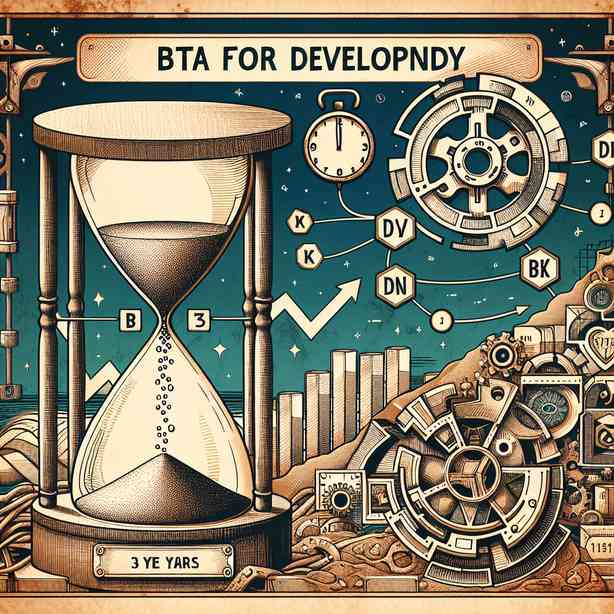
When “Beta” Lasts for Three Years
In the rapidly evolving world of technology and software development, the term “beta” is commonly associated with products that are in a testing phase prior to their official release. However, the phenomenon of a prolonged beta phase extending over several years raises intriguing questions about product development, market readiness, and user expectations.
The traditional understanding of beta-testing involves a relatively short period where features are tested, feedback is collected, and bugs are ironed out before the final launch. Yet, in recent years, there has been a noticeable trend where companies, particularly in the tech industry, extend their beta phase far beyond the typical timeframe. This shift indicates a change not just in how products are developed but also in how consumers interact with these products.
One reason for this extended beta phase can be attributed to the increasing complexity of software products. With the advent of cloud computing, artificial intelligence, and big data, the scope of features and functionalities in modern applications has expanded significantly. Consequently, companies face immense challenges in ensuring that their products are not only functional but also secure and user-friendly before launch. This leads to extended testing periods as organizations strive to deliver a polished final product. However, the lack of a definitive launch date can leave users in a state of uncertainty. They may wonder whether they are using a partially complete product or a feature-rich platform that is continually evolving.
Moreover, the users themselves have grown accustomed to a new normal in which they are expected to interact with unfinished products. Many tech-savvy users are excited to participate in these extended beta programs, viewing them as opportunities to influence product direction and provide valuable feedback. In this light, the extended beta phase can be seen as a collaborative process wherein both developers and users work together to shape the final product. Nevertheless, for the average consumer who may expect a fully functional offering, the prolonged beta can lead to frustration and dissatisfaction.
The phenomenon of lasting beta statuses brings forth another important aspect: the role of community engagement. Many companies leverage their user base to generate feedback, identify bugs, and refine functionalities during this beta period. In a world where consumers want to feel more connected to the brands they use, this approach can foster a sense of community and collaboration between the company and its users. Users often become vocal advocates for the products they support, participating in forums, providing suggestions, and sharing their experiences widely, which can further enhance brand loyalty. However, balancing the input received from a diverse group of users can prove challenging for companies, as each beta participant may have differing expectations and needs. Addressing this spectrum of feedback while keeping the product aligned with the overall vision requires strategic planning and a clear communication channel.
Furthermore, the concept of a three-year beta has implications for business strategies. It can indicate a company’s cautious approach to market entry and brand establishment. For small startups, extending the beta phase allows them to refine product features based on real-user data without the pressure of immediate monetization. It enables them to create a product that meets the demands of the market, bolstering their chance of success upon official release. However, this strategy is not without risks. Extended beta phases can lead to diminished consumer interest if the product is perceived as stagnant or not evolving. Companies must continuously communicate their progress and updates to retain user engagement.
Another point to consider is how the extended beta period impacts competition. In an industry where new entrants can emerge rapidly, organizations that take too long to exit the beta stage may find themselves outpaced by competitors that deliver robust solutions faster. Therefore, while a prolonged beta phase can provide valuable insights into product optimization, it must be managed with a keen awareness of market dynamics. Companies need to define clear milestones and timelines for progression, ensuring they can transition into a full launch while remaining competitive.
Additionally, the impact of extended beta phases can vary greatly depending on the industry. In sectors such as gaming, where user feedback can significantly influence the overall player experience, an extended beta might be welcomed by users eager to shape their gaming environment. In contrast, sectors like finance or healthcare, where reliability and security are paramount, may struggle with the concept of an indefinite beta phase since users expect polished, timely, and secure solutions.
In conclusion, while there are legitimate reasons for a prolonged beta phase lasting several years, it is essential for companies to strike a balance between meticulous product improvement and timely market introduction. As consumers evolve, so too must their expectations and the approaches taken by companies. The transparency of the development process, open communication with users, and an understanding of market expectations will be key components in navigating the complexities associated with long-lasting beta products. By prioritizing both user experience and competitive strategy, companies can harness the benefits of community-driven development while mitigating the pitfalls of prolonged beta statuses. Thus, while navigating the landscape of emerging technology, it becomes clear that the journey from beta to full product launch is as important as the product itself.


